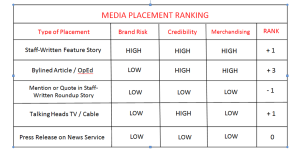
Music critic Miss Universe on "A Hard Day's Night" movie set
Songwriting legend Jimmy Webb has written some of pop music’s most enduring ballads, including Wichita Lineman, By the Time I Get to Phoenix, Galveston, The Worst That Could Happen and the rock cantata MacArthur Park (simultaneously heralded as a musical masterpiece and the worst song ever written.)
The 66 year-old Oklahoma native now lives in Long Island and performs year-round at small venues in the US, Canada and abroad. Baby boomer fans pack the room to hear Webb strain to hit his own songs’ high notes, to listen to his tales of life on the road, and to get the real stories behind how and why he wrote specific songs.
At a show last weekend in New Jersey, Webb told fans about his first trip to London in 1964, where he fell in love with Miss Universe, who he met on the set of the Beatles movie, A Hard Day’s Night. According to the rambling story, in his attempt to impress the beauty queen – who had been cast as an exotic dancer and appears for 6 seconds in the film – Webb invited her back to his hotel room, where he sat her down next to him on the piano bench and performed his then unrecorded version of MacArthur Park. Unfortunately for Webb, the 7 ½-minute song failed to put her under his spell. She told him it was a silly song and left. Or so Webb’s story goes.
For the 450 people who heard Webb’s London adventure, all of whom have listened to MacArthur Park for decades, their musical experience has been forever re-shaped. When they hear that song in the future, it will provide a different context or a different meaning. Now, instead of cakes left out in the rain, they’re more likely to envision Jimmy Webb serenading Miss Universe in London. That’s the power of storytelling.
Social media and technology provide efficient ways for people to tell stories. But according to Dr. Pamela Rutledge, Director of the Media Psychology Research Center, “The human brain has been on a slower evolutionary trajectory than the technology. Our brains still respond to content by looking for the story to make sense out of the experience.”
Writing in Psychology Today magazine, Dr. Rutledge notes that, “When organizations, causes, brands or individuals identify and develop a core story, they create and display authentic meaning and purpose that others can believe, participate with, and share. This is the basis for cultural and social change. This is a skill worth learning.”
Increasingly, in B2B communication, companies focus on the medium and the technology, rather than the underlying message, its meaning or purpose. In our world of websites, blast emails, podcasts, webinars, analytics, blogs, Facebook, Twitter, marketing automation, smart phones and mobile apps…it’s easy to forget that the quality of a company’s narrative drives people to notice, participate or care about what’s begin sold – whether that be a product, service or a philosophy.
We’re all familiar with how the big brand companies such as Harley Davidson, Jack Daniels, Levi Strauss, IBM and Ben & Jerry’s have leveraged their corporate narratives to build awareness and market interest. But most small and medium-sized companies, and B2B firms in particular, are at a loss to understand how the power of storytelling can showcase their core values, mission and marketplace differentiation. But this goal can be accomplished…not by cooking up elaborate tales about the company’s founders or its early struggles… but rather, by pulling back the curtain on how and why the company makes decisions, and by using real-life examples and incidents to provide interest and context.
A great example of effective storytelling involves Davidson Trust Company, a Devon, Pennsylvania-based investment manager with around $1 billion in assets under management. In a series of columns published in the Philadelphia Inquirer, Davidson’s CEO Alvin A. Clay III used stories to establish relevance for his thoughts on issues of importance and likely interest to his firm’s current and prospective investors.
In one of his columns, Davidson’s CEO described how his father – a longtime professor at Villanova – had been the beneficiary of kindness as a young man, and had devoted much of his teaching career returning the favor to others. In another, Mr. Clay recounted a heated debate he had experienced with other business leaders, and how that exchange had shaped his decision-making process regarding publication of his company’s ethics statement on its website. In all of Clay’s columns, he used storytelling to deliver insight and to position the Davidson brand in a genuine, credible and memorable manner.
At his concerts, Jimmy Webb spends more time telling stories than he does on singing his songs. And these events typically end with a 10-minute standing ovation.
Earlier this month, Davidson Trust Company received its own standing ovation. Publicly traded Bryn Mawr Bank Corporation (NASDAQ:BMTC) announced plans to acquire Davidson.
















